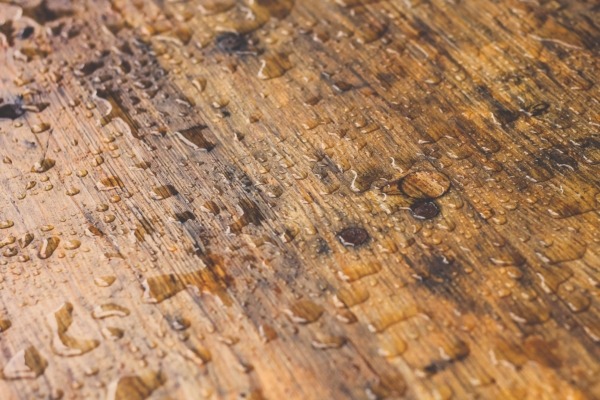How to Get Water Stains Out of Wood
Water stains on wood are the cloudy white marks or dark patches that show up after spills, drips, or moisture exposure. They might look small, but they can signal bigger problems, especially on finished wood parts like stair balusters, porch columns, or furniture legs. If you’re a homeowner trying to fix your table, a contractor restoring stair parts, or someone preserving historic woodwork, this guide is for you.
Let’s walk through how water stains happen and what you can do about them.

Water Stains on a Finished Wood Surface
Water left on finished wood can lead to white rings or deep stains, common signs of moisture damage.
What Causes Water Stains on Wood?
Water stains usually come in two types. The first type is white stains are caused by moisture trapped under the finish. This often happens when a cold drink, wet rag, or plant pot sits on the surface for too long. Dark stains happen when the water soaks past the finish and into the wood itself. These are more serious and can be harder to fix.
Knowing the difference helps you choose the right fix, and know when it’s time to replace the piece entirely.
DIY Methods to Remove Water Stains
Before grabbing sandpaper or replacing the part, try one of the simple tricks below to remove water stains.
- 1The Iron and Cloth Method: Put a clean cotton cloth (like an old t-shirt) over the white stain. Use a clothes iron on low heat with no steam and press it lightly on the cloth for a few seconds at a time. This helps pull the moisture out.
- 2Baking Soda Paste: Mix baking soda with a few drops of water to form a thick paste. Rub it gently onto the stain using a soft cloth, then wipe clean. This gently lifts out moisture without damaging the finish.
- 3Vinegar and Olive Oil: Mix equal parts white vinegar and olive oil. Rub the mix onto the stained area with a cloth, following the wood grain. The vinegar helps clear the stain, and the oil adds some shine.
- 4Wood Cleaner: You can also try a commercial wood cleaner designed for removing marks and restoring finish. Follow the instructions and test it in a small spot first.
If the stain is still there after trying these, it might be too deep. Time to move to the next step.
When to Sand, Refinish, or Replace
Some water damage can’t be fixed with surface cleaning. Below are a few signs that it might be time to sand or replace the piece.
Be careful with pieces like balusters or decorative columns. Sanding these too much can ruin their shape or carve off the details. If you’re working with a turned wood part that has grooves, curves, or tapering, you’re better off replacing it than sanding it down too far.
Restoring or Replacing Architectural Wood Parts
Some wood components, like porch columns, stair balusters, or custom legs on furniture, are just too detailed or could be too damaged to fix easily. In some cases, it’s faster and more cost-effective to replace them.
When you do, it’s important to match the exact shape or profile of the part, the right wood species for the color and strength, and the proper finish to blend with the rest of the piece.
That’s where we come in. Whether you need one custom stair part or hundreds of matching balusters, we can recreate the exact shape and size you need in almost any species of wood. Send a sample, photo, or drawing and we can take it from there! Have a water-damaged spindle, leg, or post? We’ll make you a perfect match.
Why Work With Arnold Wood Turning?
We’ve been making custom wood parts for over 100 years. Whether you’re a homeowner completing a porch rebuild or a contractor working on a full renovation, we offer the options below, and more.
If you’re trying to restore a vintage or historic look, we’ll help you match the smallest details, even if the original part is missing or damaged.
Need help replacing a stair part or column? Get in touch with Arnold Wood Turning for a free, no-obligation quote and expert help today!
